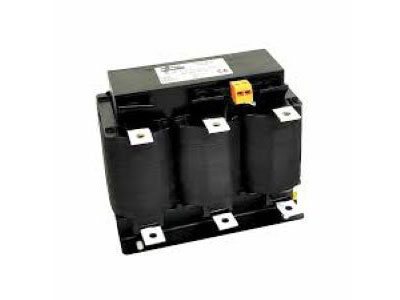Key Takeaway
VFDs (Variable Frequency Drives) are nonlinear devices in industrial settings. They operate by switching power on and off rapidly, generating a pulse-width modulated (PWM) waveform. This waveform includes high-frequency harmonics due to the VFD’s switching action. The frequency of these harmonics increases with the VFD’s switching frequency. This nonlinear behavior distinguishes VFDs from linear devices that operate with a consistent input-output relationship. Understanding this nonlinearity is crucial in managing electrical systems to minimize harmonic distortions and ensure efficient operation of industrial machinery.
Understanding Linear and Nonlinear Systems
Linear systems are characterized by a direct, proportional relationship between input and output, making them predictable and easier to analyze. In contrast, nonlinear systems exhibit a complex, often unpredictable relationship where output is not directly proportional to input. This fundamental distinction is crucial for engineers when evaluating systems like Variable Frequency Drives (VFDs). Understanding whether a system is linear or nonlinear helps in predicting its behavior, troubleshooting issues, and optimizing performance.
In industrial applications, both linear and nonlinear systems play significant roles. Linear systems are preferred for their simplicity and predictability, while nonlinear systems, although more complex, can offer enhanced performance and flexibility. Recognizing the type of system in use can impact decision-making and operational strategies in significant ways.

Characteristics of VFD Operation
Variable Frequency Drives (VFDs) are devices that control the speed and torque of electric motors by varying the frequency and voltage of their power supply. VFDs are integral to modern industrial automation due to their ability to enhance energy efficiency, reduce mechanical stress on motors, and provide precise control over motor operation. The operation of VFDs involves complex processes, including rectification, filtering, and inversion, which contribute to their sophisticated performance.
The behavior of VFDs can be influenced by various factors such as load conditions, motor characteristics, and control strategies. These factors determine whether the VFD operates in a linear or nonlinear manner. For instance, at low load conditions, VFDs may exhibit near-linear behavior, but under dynamic or high load conditions, their behavior can become significantly nonlinear. Understanding these characteristics is crucial for engineers to effectively utilize VFDs in industrial applications
You May Like to Read
Analysis of VFD Linear and Nonlinear Behavior
To determine whether a VFD is linear or nonlinear, it is essential to analyze its response to different operating conditions. A linear VFD would exhibit a consistent and predictable relationship between input signals (like frequency and voltage) and output responses (such as motor speed and torque). However, VFDs often display nonlinear behavior due to factors such as saturation effects in the magnetic components, harmonic distortions, and the complexity of control algorithms.
For instance, the pulse-width modulation (PWM) technique used in VFDs to generate variable voltage and frequency can introduce nonlinearity due to switching actions. Additionally, the interaction between the VFD and the motor’s inherent characteristics, such as inductance and resistance, further complicates the system’s linearity. Engineers must consider these nonlinearities when designing and troubleshooting VFD systems to ensure optimal performance and reliability.
Practical Implications in Industrial Applications
The linear or nonlinear nature of a VFD has significant practical implications in industrial applications. Linear VFDs are easier to model and control, making them suitable for applications requiring precise and predictable performance. However, their simplicity might limit their efficiency and flexibility in handling complex load conditions. On the other hand, nonlinear VFDs, while more challenging to analyze and control, can offer superior performance in terms of energy savings, dynamic response, and adaptability to varying load conditions.
In practice, most industrial applications involve some degree of nonlinearity in VFD operation. Engineers must be equipped with the knowledge and tools to manage these nonlinearities effectively. This includes using advanced control algorithms, harmonic filters, and appropriate motor selection to mitigate the effects of nonlinear behavior and ensure stable and efficient operation.
Future Trends in VFD Technology
The future of VFD technology is geared towards enhancing their linearity and mitigating the adverse effects of nonlinear behavior. Advances in power electronics, control algorithms, and sensor technology are driving these improvements. For example, the development of high-speed digital signal processors (DSPs) and sophisticated control strategies can enhance the precision and responsiveness of VFDs, making them more linear and predictable.
Additionally, the integration of artificial intelligence (AI) and machine learning (ML) in VFD control systems holds the promise of self-optimizing drives that can adapt to varying operating conditions in real time, further minimizing nonlinear behavior. These trends are set to revolutionize industrial automation, offering more efficient, reliable, and adaptable VFD systems that cater to the evolving demands of modern industries.
Conclusion
In conclusion, whether a VFD is linear or nonlinear depends on various factors, including its design, control strategies, and operating conditions. Understanding this distinction is essential for engineers to effectively utilize VFDs in industrial applications. While linear VFDs offer simplicity and predictability, nonlinear VFDs provide enhanced performance and flexibility, albeit with increased complexity.
As technology advances, the line between linear and nonlinear VFDs is becoming increasingly blurred, with innovations aiming to harness the benefits of both. By staying informed about these developments and applying best practices in VFD selection and operation, engineers can ensure the optimal performance and longevity of their motor control systems.
